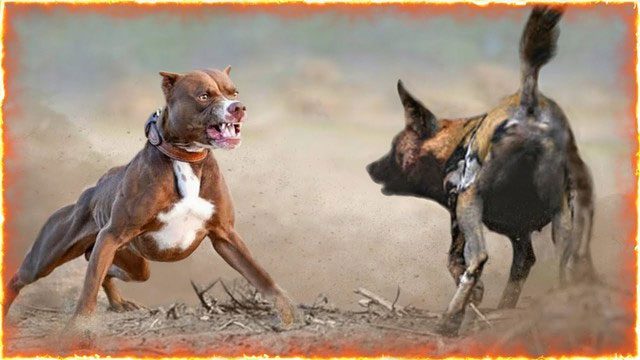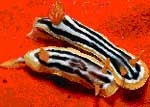The Release of 20 Pitbulls into the African Savannah and whether they could survive for a week is a complex question that depends on many factors. However, in the past, this has happened, and they only survived for 5 days.
In 1932, the famous animal trainer Drake from England introduced 50 pitbulls into the African savannah, intending for them to fight, adapt to the wild, and evolve into a new breed of dog.
But the result was a tremendous disappointment for him; the fearless pitbulls perished within just 5 days.

In the past, pitbulls were released into the African savannah, but they died after only 5 days.
Pitbulls originated in the 19th century and are also known as “American Pit Bull Terriers.” They are aggressive dogs bred for fighting. They are dubbed as highly determined dogs that will never give up in a fight, hence the title of “King of Fighting Dogs.”
While pitbulls may not be as easily trainable or intelligent as many other breeds, they are incredibly brave and “bloodthirsty.” During fights, they quickly release a large amount of adrenaline, thus they cannot feel pain (or more precisely, their pain tolerance in battle is much higher than other breeds), making their endurance extraordinarily impressive as they can fight continuously for over 100 minutes.
However, pitbulls have a strong desire to attack. Sometimes even their owners may be attacked (especially inexperienced handlers), leading many major cities around the world to classify pitbulls as a banned breed.

Pitbulls have a strong desire to attack.
Pitbulls are bred for fighting. Their fighting skills and strength are exceptional; they are very fierce when in combat. It is not an exaggeration to say that a giant pitbull can kill a 100 kg sheepdog within 10 minutes.
Because of the incredible biting force of a pitbull, it can exert 80 kg of pressure in a single bite and can tear through human skin with just a snap. Generally, a bulldog will lose stamina after fighting for 5 minutes, but for a pitbull, 5 minutes is just the beginning of a battle.
The body of a pitbull is also very strong. Their entire body is composed of muscle with very little fat, making them fast and powerful in their attacks. Additionally, pitbulls have very solid defensive capabilities, with bones that are 3 to 5 times harder than those of other breeds.

The African climate also makes it difficult for pitbulls to adapt.
We all know that Africa is a paradise for wildlife, but for pitbulls, it is more like an “inferno,” a place scarier than a battlefield due to the presence of too many large carnivores in Africa. For example, lions, hyenas, and leopards are formidable predators. Sometimes, they even dare to attack rhinos and crocodiles to fill their stomachs.
Although pitbulls are also good fighters, their size is too small compared to these wild animals. The average body length of pitbulls is just over 60 cm, and their weight is under 50 kg. This size is incomparable to the wildlife found in Africa.
In addition to predators, Africa is also home to many large herbivores with aggressive temperaments, such as elephants, hippos, and buffaloes, particularly the African buffalo, which is abundant and has a strong inclination to attack; even hyenas weighing 50-70 kg do not dare to provoke these herbivores.

The size of pitbulls is too small compared to the large wild animals in Africa.
Moreover, pitbulls have a very irritable nature and a strong territorial instinct. They will attack any animal that approaches them without permission. However, given their size and biting force, they are unlikely to inflict fatal damage on animals that weigh hundreds of kilograms more than them.
It is easy to imagine that if a pitbull were released to live in Africa, it would become food for lions and hyenas or be killed by large herbivores, and it would be hard for it to survive more than a week.
In addition to fierce beasts, Africa also has many deadly creatures, such as the black mamba snake. This snake is the most venomous and powerful in the African savannah, even lions do not dare to provoke them.
Additionally, there is a very frightening species of ant in Africa known as the African red fire ant. They are entirely red and only 3 cm in size. However, after being bitten, the wounds can feel painful and blistering, potentially leading to secondary infections.
The plant life in Africa is also very dangerous, such as the African acacia tree. They have very sharp thorns and their seeds contain a lot of toxins. If a pitbull mistakenly eats one, it will die immediately.
Furthermore, the African climate also makes it difficult for pitbulls to adapt. You must know that most areas in Africa are hot and dry year-round, with a distinct dry season, making it very difficult for pitbulls, a breed bred and raised by humans, to adapt to the wild natural environment.

If the dangers above do not kill them, they will still slowly starve.
Whether pitbulls can find water in Africa is also a significant concern. They lack the methods of finding water that local animals have, and even if they are lucky enough to find water, a crocodile could be waiting for them there.
The scariest part is that the harsh environment in Africa produces many types of deadly viruses; once infected, they will die slowly.
Additionally, pitbulls do not have a sense of teamwork; they will not listen to a leader and, in fact, they may end up attacking each other before being killed by wild animals or the natural environment of Africa.
Moreover, the hunting ability of pitbulls is also very poor. Their speed cannot keep up with antelopes, and they can only catch up to elephants and rhinos. However, pitbulls cannot hunt such animals, even when fighting in groups. Therefore, if the dangers above do not kill them, they will still starve slowly.





















































